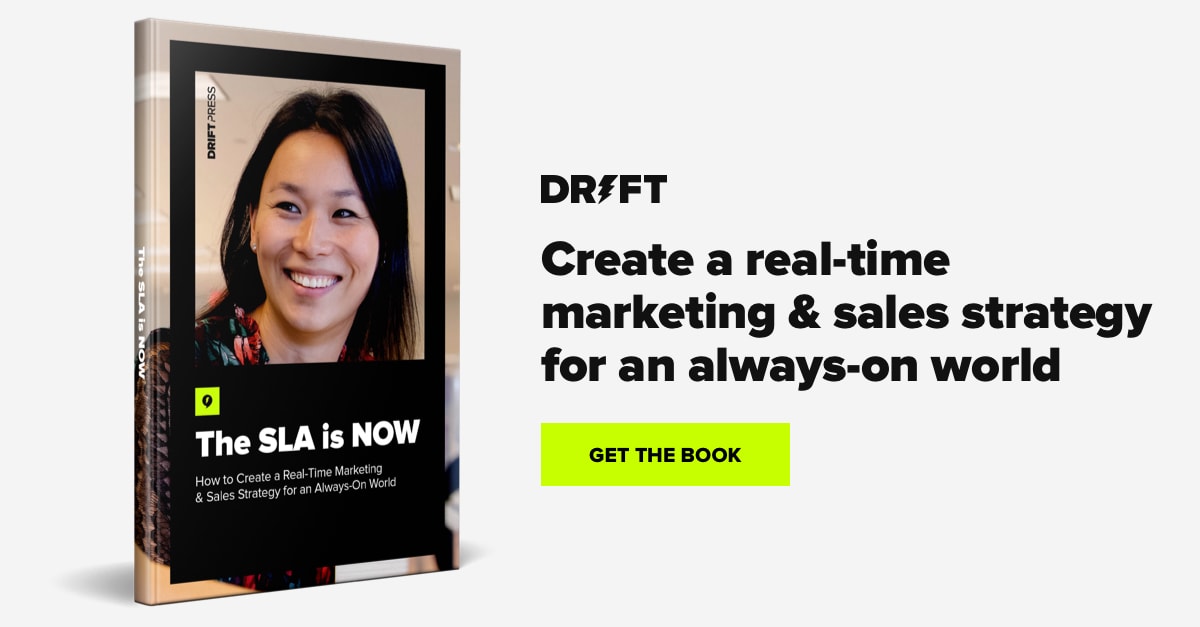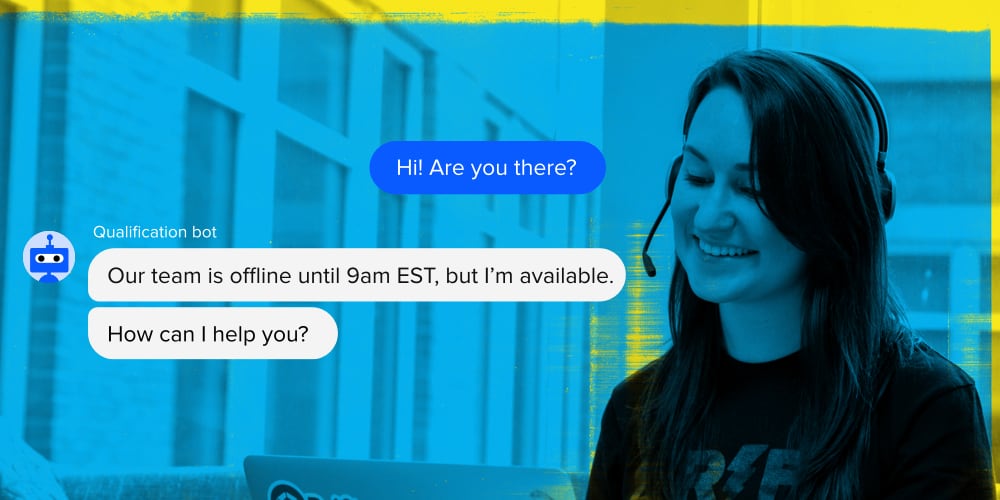Your buying experience shouldn’t start when your prospective buyer arrives on your site. And it shouldn’t end once that buyer, you know, buys.
84% of B2B sales start with a referral.
That means your best salespeople are actually your current customers.
The buying experience needs to be an all-encompassing, personalized journey for each buyer that starts the moment they interact with your brand for the first time and continues long after the ink on their contract is dry.
That’s what’s going to turn your prospects into customers…and your customers into advocates.
I sat down with Enlin Chua, Strategic Account Manager at Front, to talk through examples of personalized experiences at each stage of the buying journey, how these experiences lead to higher conversion rates among your ideal buyers, and how to turn your new customers into outspoken advocates for your brand.
What the Buyer’s Journey Really Looks Like
Ah, doesn’t this picture look nice?

Image source
Everything falls in little buckets, with each stage completely separate.
We all know that’s not how it really works.
Even though you might spend every day thinking about your product, your customers don’t . Throughout any sales cycle, you typically uncover multiple stakeholders with different opinions, lengthy internal processes, and competing priorities that add a level of complexity to the buyer’s journey. When all is said and done, it ends up looking more like this:
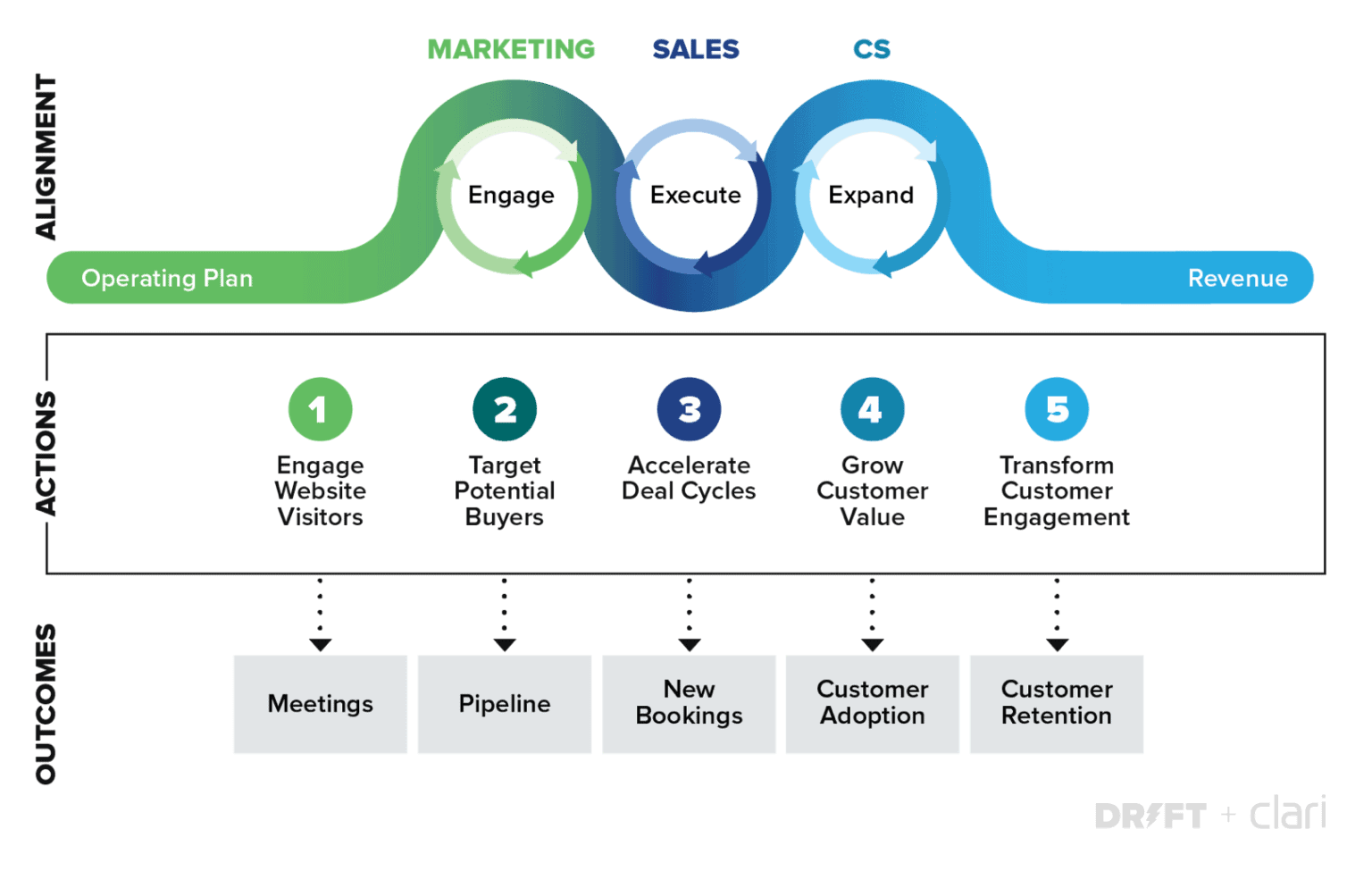 These complexities make creating the perfect digital buying experience challenging, to say the least.
These complexities make creating the perfect digital buying experience challenging, to say the least.
In fact, 80% of brands believe they deliver a superior customer experience…but only 8% of customers agree.
Your customers want more. And they’re frustrated when they don’t get it.
73% of customers expect brands to understand their needs and expectations. And 64% expect tailored experiences based on past interactions. Here’s how to do it right:
5 Ways to Deliver a More Personalized Buying Experience
So, how do you actually deliver a more personalized experience for prospects and customers?
Here are five tried-and-true digital marketing tactics you can use to build a better, more personalized experience for your buyers.
1. Create Targeted Campaigns
If we’re doing our job right as marketers, it means the right person receives the right message at the right time.
And it works. Conversations started from marketing campaigns are 268% more likely to convert from visitor to a lead.
In order to meet your customers where they are, you first have to understand and define who it is you’re targeting, and where in the buyer’s journey they might be.
Translation: You have to engage prospects and understand them in order to recommend the best course of action for them.
Let’s look at an example in practice 👇
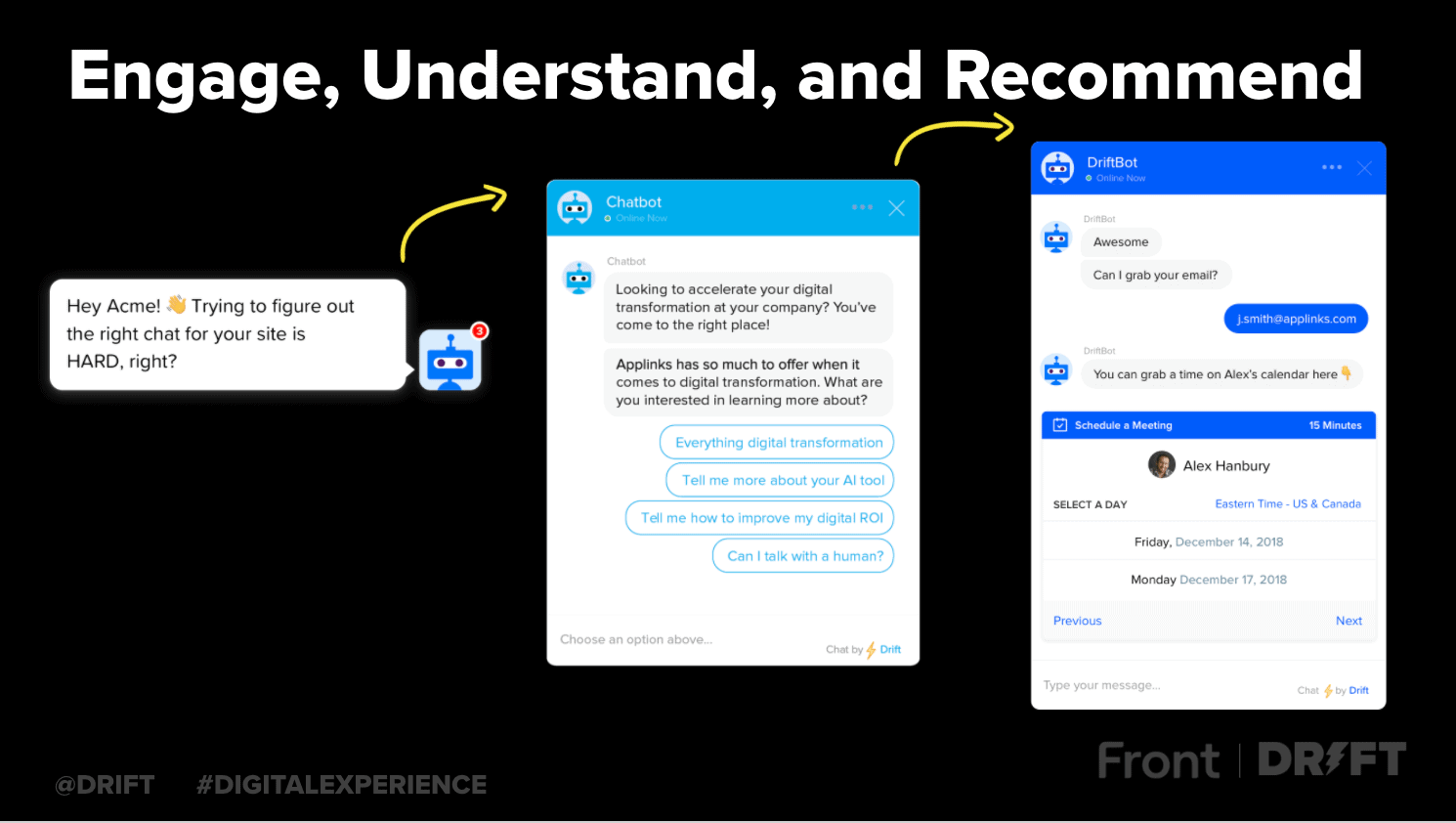
Here’s a closer look at each stage:
- Engage: Here, you see our Driftbot identifying the prospect on our website. They greet them by their company name and engage them by addressing a pain point. In this case, we’re talking all about the right chat experience for your website.
- Understand: The bot asks a clarifying question to gather more detail and identify exactly what the visitor is looking for. The visitor selects the most relevant option…
- Recommend: …and the Driftbot recommends the next best step. In this case, it’s talking to a sales rep.
That gives everyone who comes to the website a 1:1 experience that best suits their needs.
2. Action Your Sales Team
46% of customers expect a response within five seconds or less.
1, 2, 3, 4…do you have a response yet?
Don’t wait for leads to convert or fill out a form. Your sales interactions happen in real-time.
That means your sales team needs tools to be responsive and provide immediate value to your prospects.
We do this at Drift by allowing for real-time engagement through notifications and live chat:
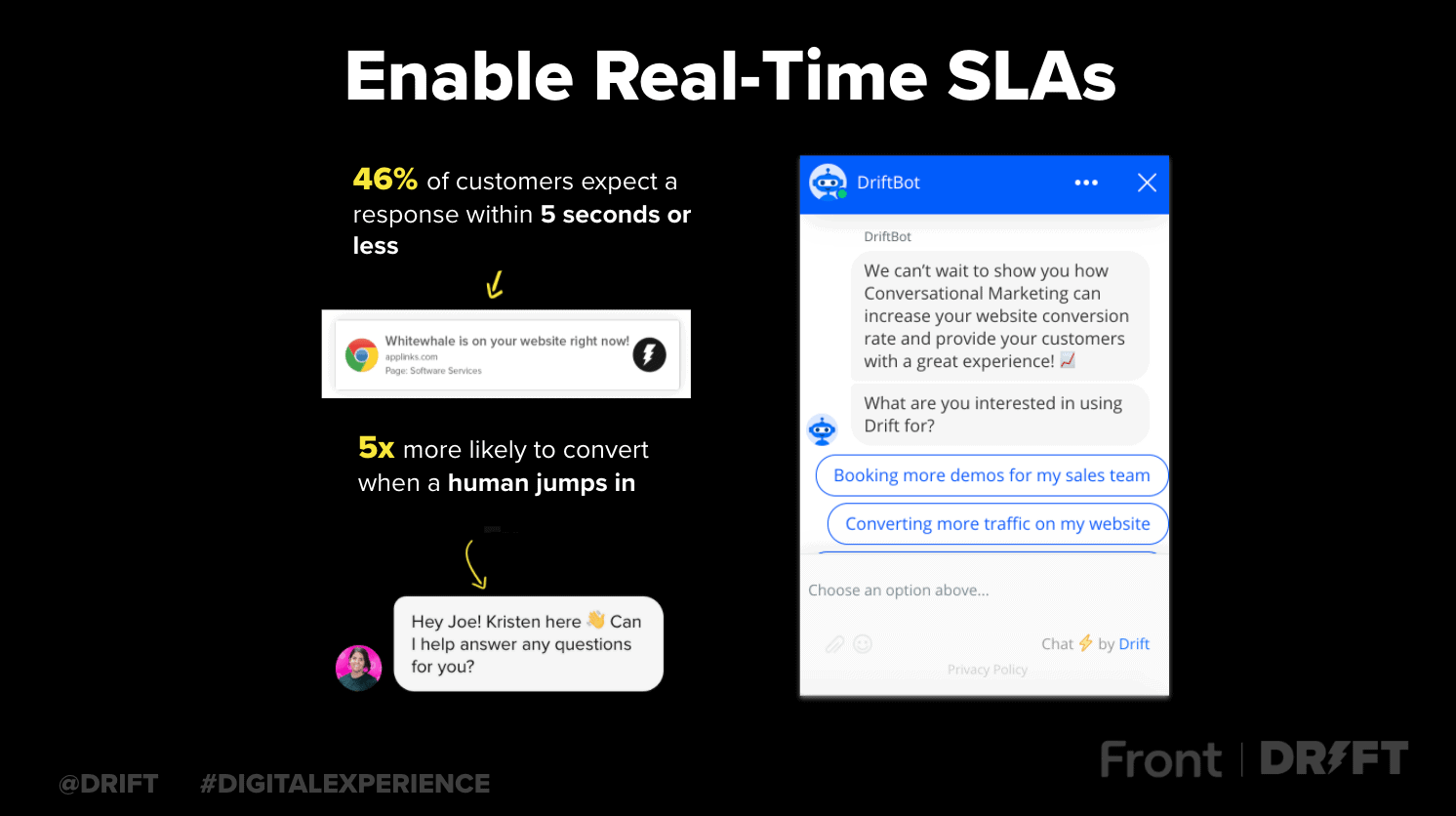
Use notifications to enable your sales team to make that quick connection when it’s appropriate.
That’s important because prospects are 5x more likely to convert when a human jumps in.
The reason notifications work so well is that sales reps have the context they need to have informed conversations with prospects. They can see which campaigns a prospect engaged with, what pages they viewed, and any other information we’ve gathered about them through previous conversations and touchpoints.
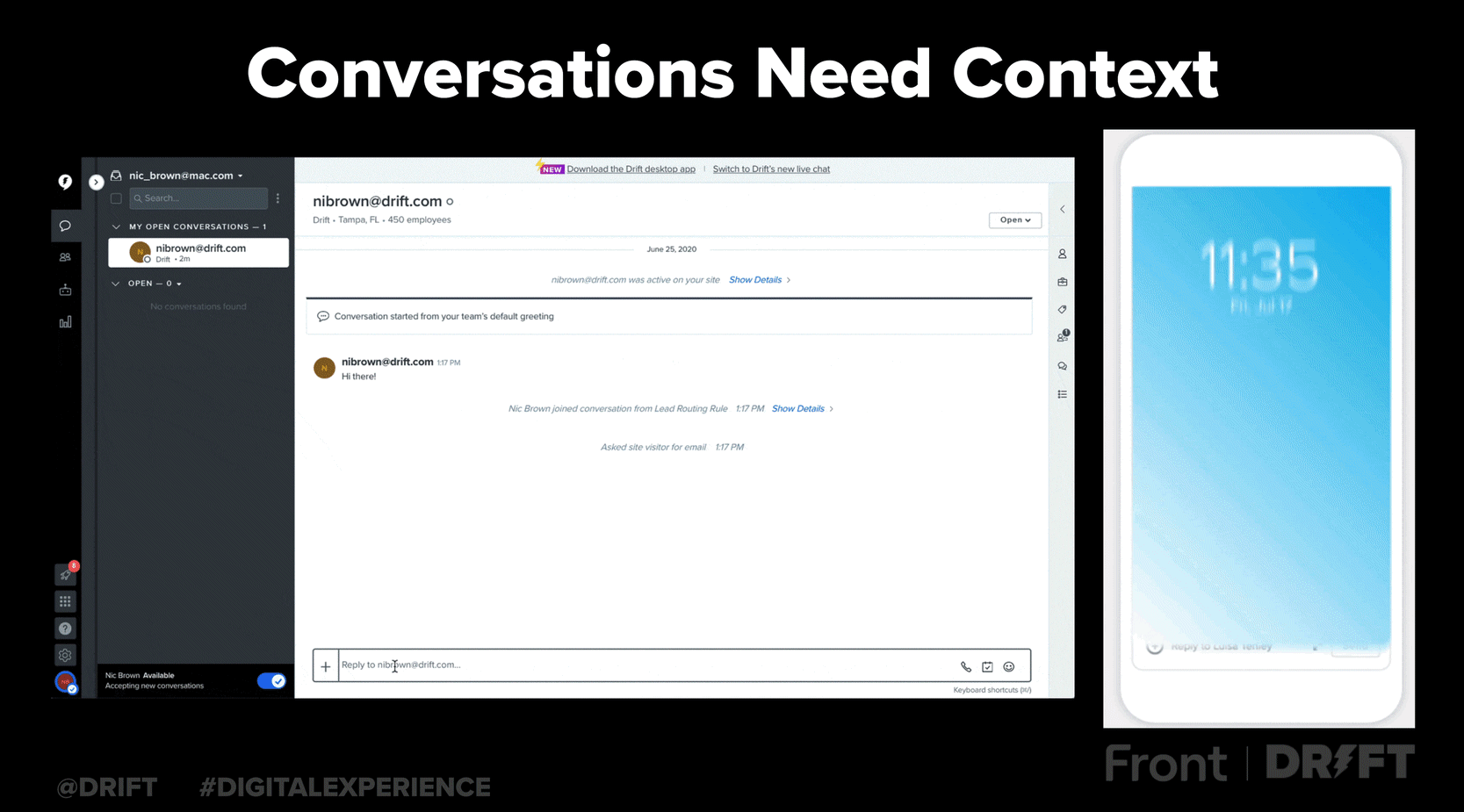
To build a personalized experience, you need to have the right data.
3. Stress Customer Experience in the Sales Process
We’ve said this before, but it’s worth repeating: The sales process isn’t over just because you closed the deal.
Once you’ve converted a prospect to a customer, the focus becomes setting the tone for a customer relationship that brings value to both sides of the equation.
Happy customer relationships start with smooth sales handoffs. Your sales team needs to collect deployment and outcome information during the sales process in order to be successful down the line.
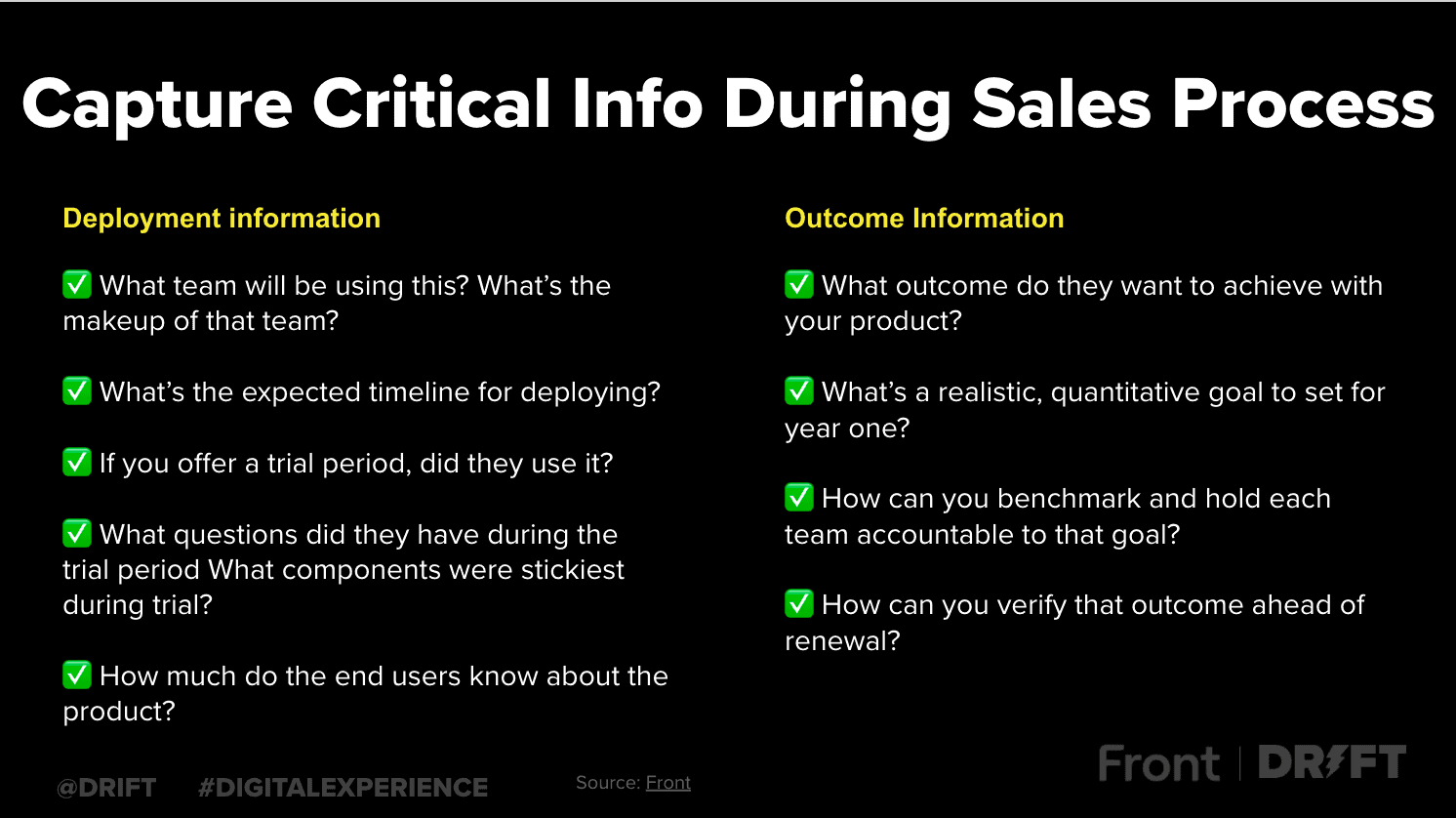
Put yourself in your customer’s shoes by aligning your objectives with theirs. Ask yourself:
- What team will be using this? Who’s on that team?
- What’s the time-to-value look like?
- What questions do they have after trial or onboarding?
- What other information do they need to know about using my product or services?
- What do they want to achieve with the product? What are their goals?
It takes teams working together to design and consistently execute these handoffs, to make sure that you’re creating a centralized place for critical information during the sales process that builds on your customer relationship.
Because then it’s time to…
4. Master the Sales <> Customer Success Handoff
Every customer should feel like they’ve had a tailored experience with your buying process so they feel supported and excited about what you have to offer.
The key? Communication. Set the stage for what customers can expect in the onboarding and account management phase of the buyer’s journey within the sales process.
51% of customers stop doing business with the company after one bad experience. Because of this, we can’t stress how high the stakes are during this process.
Your sales and customer success teams should feel like one team. Our friend Chad Horenfeldt over at Updater said it best:
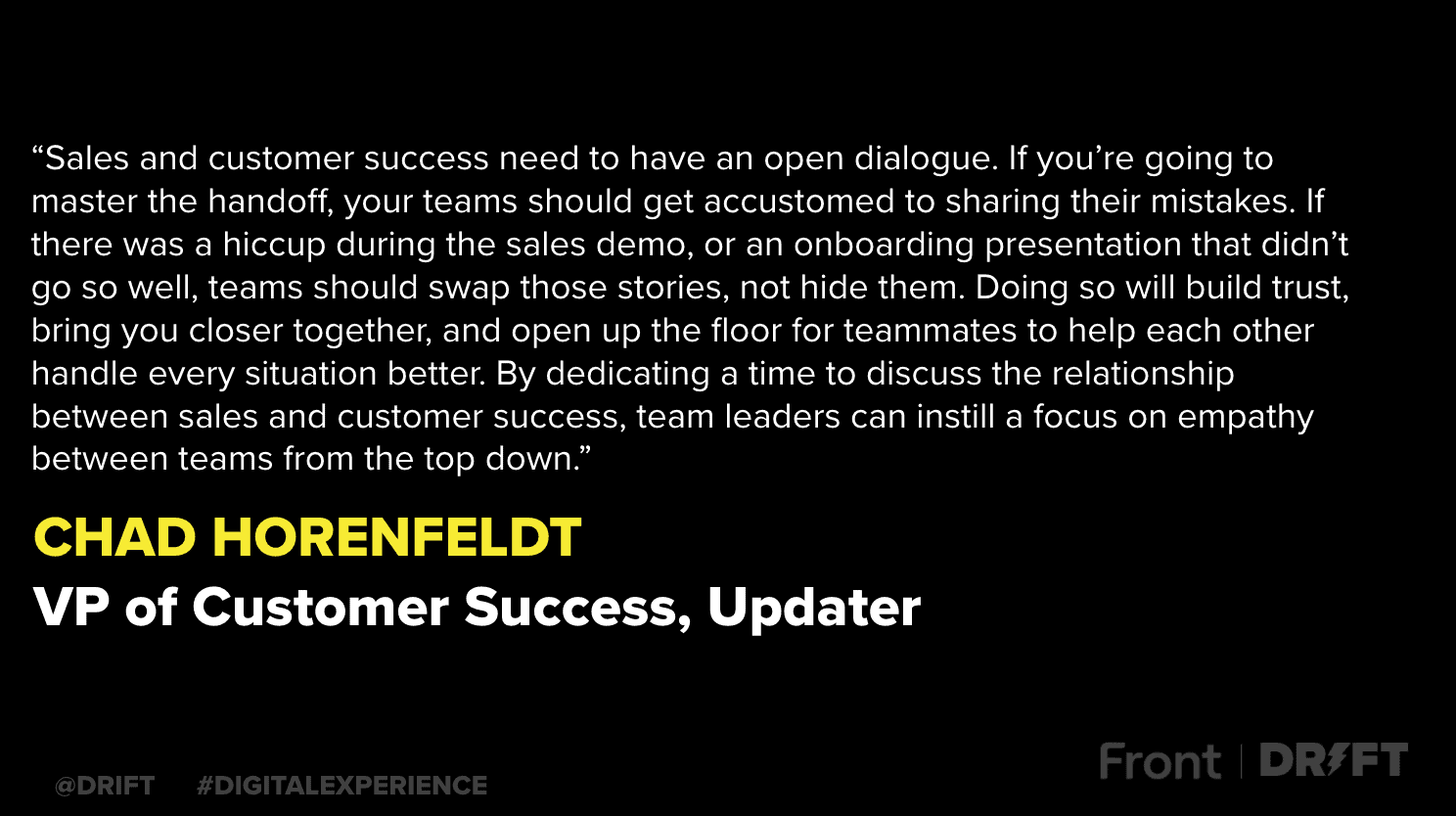
In practice, a successful handoff looks something like this:
- Routing messages from sales to CS automatically
- Getting context from the sales process in the handoff, whether that’s anecdotal stories or specific questions and themes from meetings
- Collaborating to write better replies and make each interaction feel special
By dedicating time to the relationship between customer success and sales teams, you’re building empathy for your customers and each other, to ensure the success and longevity of the relationship between yourself and each customer.
5. Build a Feedback Engine
The more you learn about your customers, the more you can make business and product decisions that help your company grow.
Feedback is the engine that makes this possible.
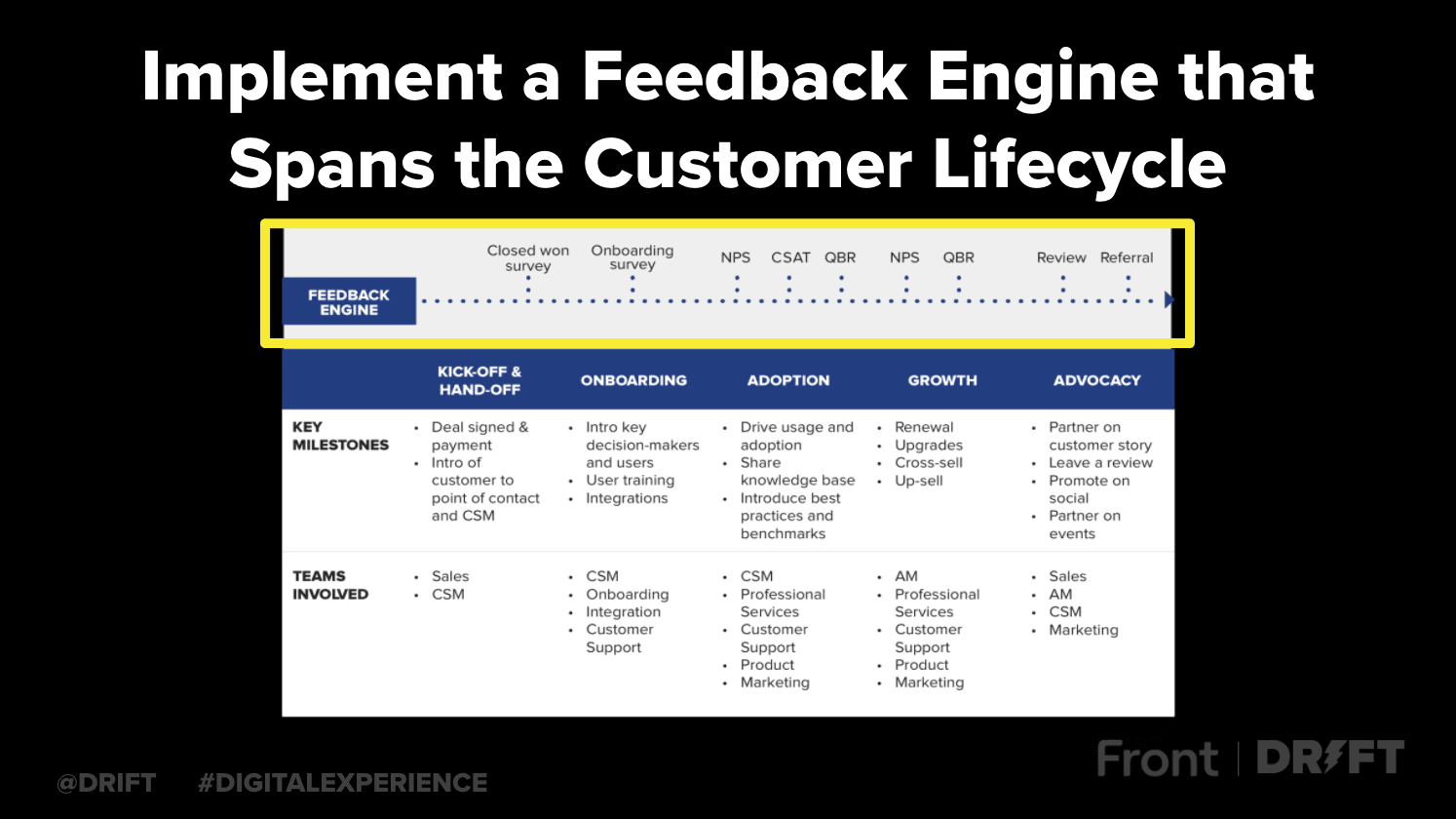
Asking for feedback can feel awkward. But it’s not just important for you. Asking for feedback makes your customers feel important and involved, so they know you value their opinion.
But so often, this feedback gets trapped with sales or customer success.
Implement a feedback engine that spans the customer lifecycle so every team can understand what’s working and what’s not. Once you’ve collected this feedback, it’s really important to act on it so it doesn’t live in a vacuum:
- Organize and centralize feedback into a central place
- Jot down anecdotal feedback on sales calls and demos
- Use charts and graphs to back up anecdotal feedback and tell a story
- Share specific customer stories
- Link departmental goals to customer feedback
Tailor Your Buyer’s Journey to the Customer
Providing the ideal experience for your customers and prospects –no matter where they are in the buying journey – can be challenging.
It requires personalizing at every stage of the journey:
- Defining targeted campaigns to reach specific prospects
- Giving sales the tools they need to engage quickly and with context
- Keeping customer experience top-of-mind at every part of the sales process
- Making the handoff to customer success seamless post-sale
- Implementing feedback to optimize the entire journey
You have to make it easy for a customer to do business with you. Otherwise, why would they stay? And that starts from the moment they interact with your brand.





